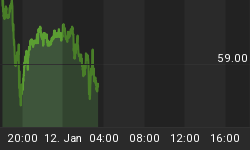The renewable energy sector has lately been sizzling with very bullish projections--and a few bearish ones--coming from Wall Street. Solar stocks have especially been shooting the lights out as a Biden presidency is increasingly being viewed as a big win for clean energy.
However, one corner of the market has really been hogging the limelight: The hydrogen sector.
From a Wall Street pariah that was burdened with too many challenges to become a practical energy source during our lifetimes, suddenly even giant utilities such as Nextera Energy (NYSE:NEE) and Dominion Energy (NYSE:D) have charted highly ambitious hydrogen roadmaps.
Bank of America says hydrogen could supply our vast energy needs, fuel our cars, heat our homes, and also help to fight climate change. BAC says we have reached the tipping point of harnessing this element effectively and economically and predicts the hydrogen marketplace to reach a staggering $11 trillion by 2050.
It, therefore, comes as no surprise that the hydrogen boom is likely to provide a significant boost to renewable energy in some sort of virtuous cycle by creating substantial investment opportunities for solar and wind energy, the scaling of which could lower hydrogen production costs even further.
Chief sustainability strategist at BNP Paribas Asset Management, Mark Lewis, has told CNBC that the development of green energy will create the biggest investment opportunities for renewables and not hydrogen infrastructure as we might be tempted to think.
Scores of global energy heavyweights, including BP, Siemens Energy, Repsol, and Orsted have already outlined their green hydrogen strategies.
U.S.-based Plug Power(NASDAQ:PLUG) has struck a deal with Apex Clean Energy to develop a green hydrogen network using wind power offers a chance to tap into "very low cost" renewable power and helps accelerate the shift to clean energy. Plug has a goal for over 50% of its hydrogen supplies to be generated from renewable resources by 2024.
Green hydrogen
None, however, comes close to matching the EU's hydrogen ambitions.
Three months ago, the European Union has set out its new hydrogen strategy as part of its goal to achieve carbon neutrality for all its industries by 2050.
In a big win for the hydrogen sector, the EU outlined an extremely ambitious target to build out at least 40 gigawatts of electrolyzers within its borders by 2030, or 160x the current global capacity of 250MW. The EU also plans to support the development of another 40 gigawatts of green hydrogen in nearby countries that can export to the region by the same date.
But here's the kicker: The regional bloc intends to have 6GW of green hydrogen produced from renewable energy up and running by 2024.
The world currently produces about 70 million metric tonnes of hydrogen per year, of which only about 4% is generated from renewable energy as per the World Energy Council.
That's the case because green hydrogen is currently the most expensive hydrogen source, with grey hydrogen produced from fossil fuels via Steam Methane Reforming (SMR) and coal gasification the cheapest. But the EU does not seem bothered with costs at the moment, with its main goal being to become carbon neutral by 2050.
Or maybe it just wants to gain a first-mover advantage in a market that will surely enjoy some of the biggest growth of any energy sector in the coming decades.
So, what does the EU green hydrogen goal mean for the renewables sector? Related: Cobalt Squeeze Threatens The Electric Vehicle Boom
According to BNP Paribas Asset Management's Lewis, developing these green hydrogen commitments will require ~$400B, fully half of which will go to developing new renewable energy capacity, thus increasing the growth opportunity of a sector that's already red-hot.
That's a $200B boost for the global renewable sector, or nearly 4x the EU's ~$55B investments in clean energy in 2019.
A lot of that hydrogen is probably going to be used to decarbonize the mobility sector, giving EV investors some serious food for thought.
What will hydrogen be used for in 2040?

Source: World Energy Council
By Alex Kimani for Oilprice.com
More Top Reads From Safehaven.com:

















